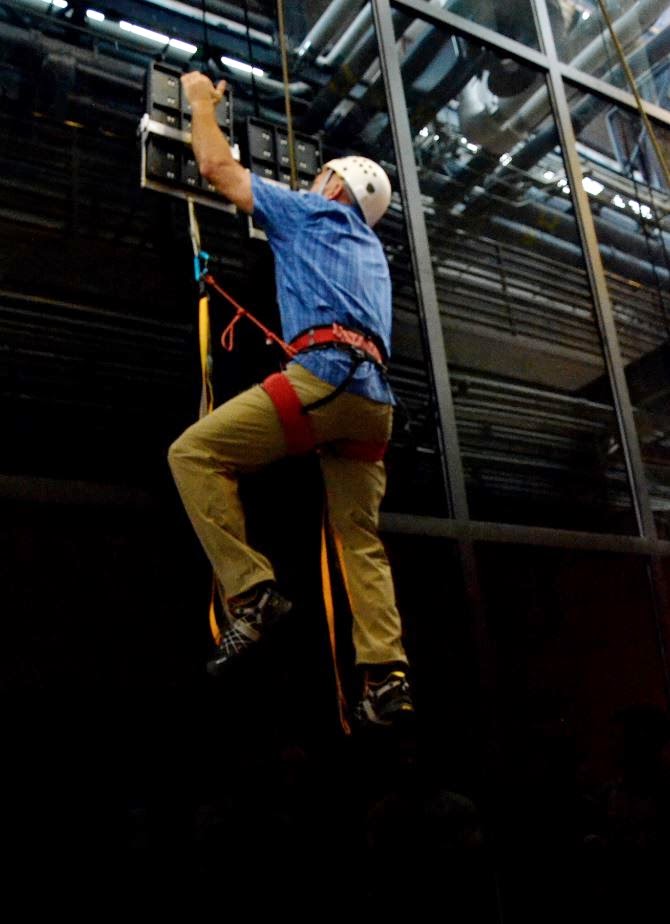| Online: | |
| Visits: | |
| Stories: |

| Story Views | |
| Now: | |
| Last Hour: | |
| Last 24 Hours: | |
| Total: | |
DARPA has demonstrated Gekko-like wall crawling
DARPA’s Z-Man program has demonstrated the first known human climbing of a glass wall using climbing devices inspired by geckos. The historic ascent involved a 218-pound climber ascending and descending 25 feet of glass, while also carrying an additional 50-pound load in one trial, with no climbing equipment other than a pair of hand-held, gecko-inspired paddles. The novel polymer microstructure technology used in those paddles was developed for DARPA by Draper Laboratory of Cambridge, Mass.
Historically, gaining the high ground has always been an operational advantage for warfighters, but the climbing instruments on which they’re frequently forced to rely—tools such as ropes and ladders—have not advanced significantly for millennia. Not only can the use of such tools be overt and labor intensive, they also only allow for sequential climbing whereby the first climber often takes on the highest risk.
Source: http://nextbigfuture.com/2014/06/darpa-has-demonstrated-gekko-like-wall.html




